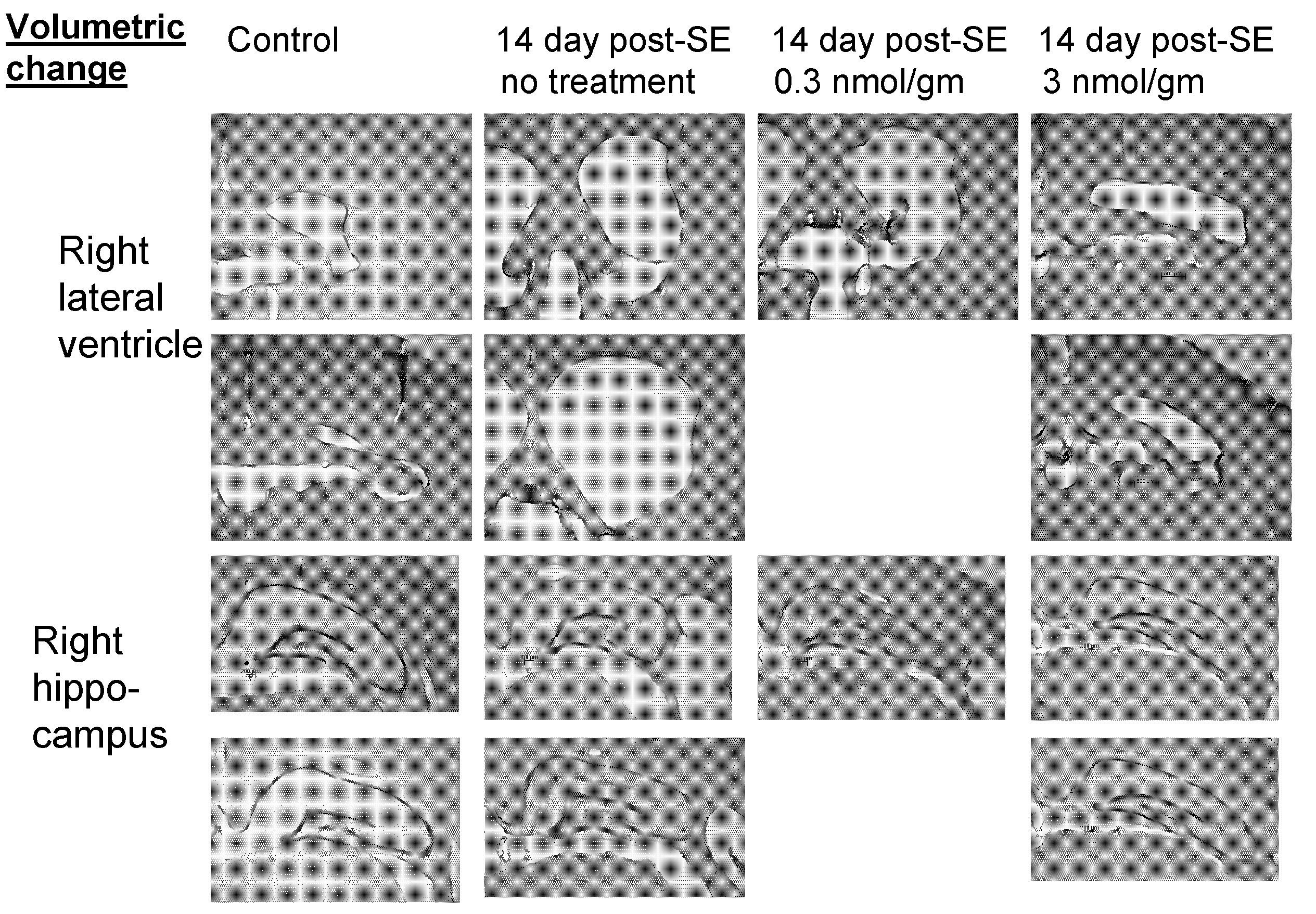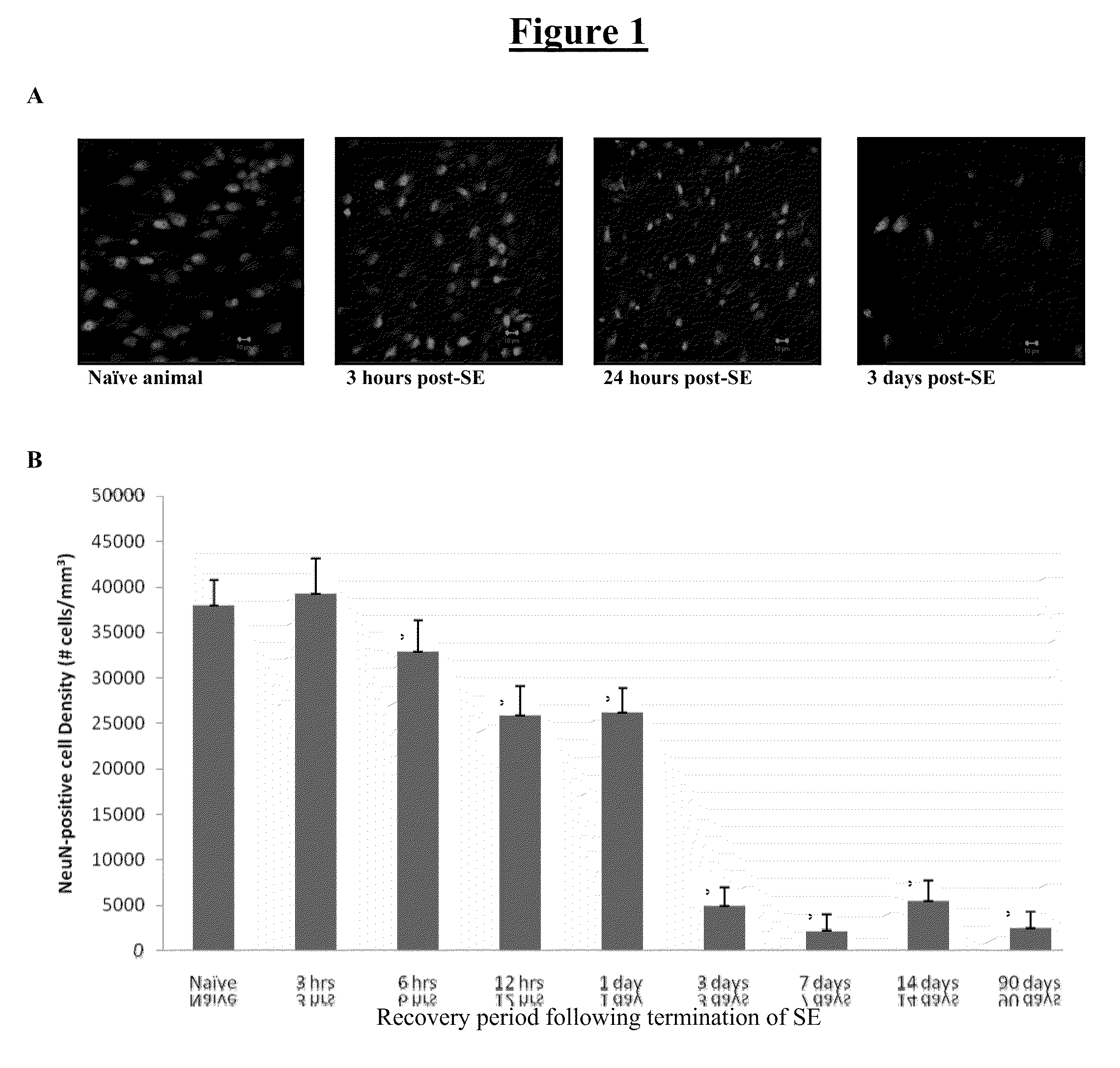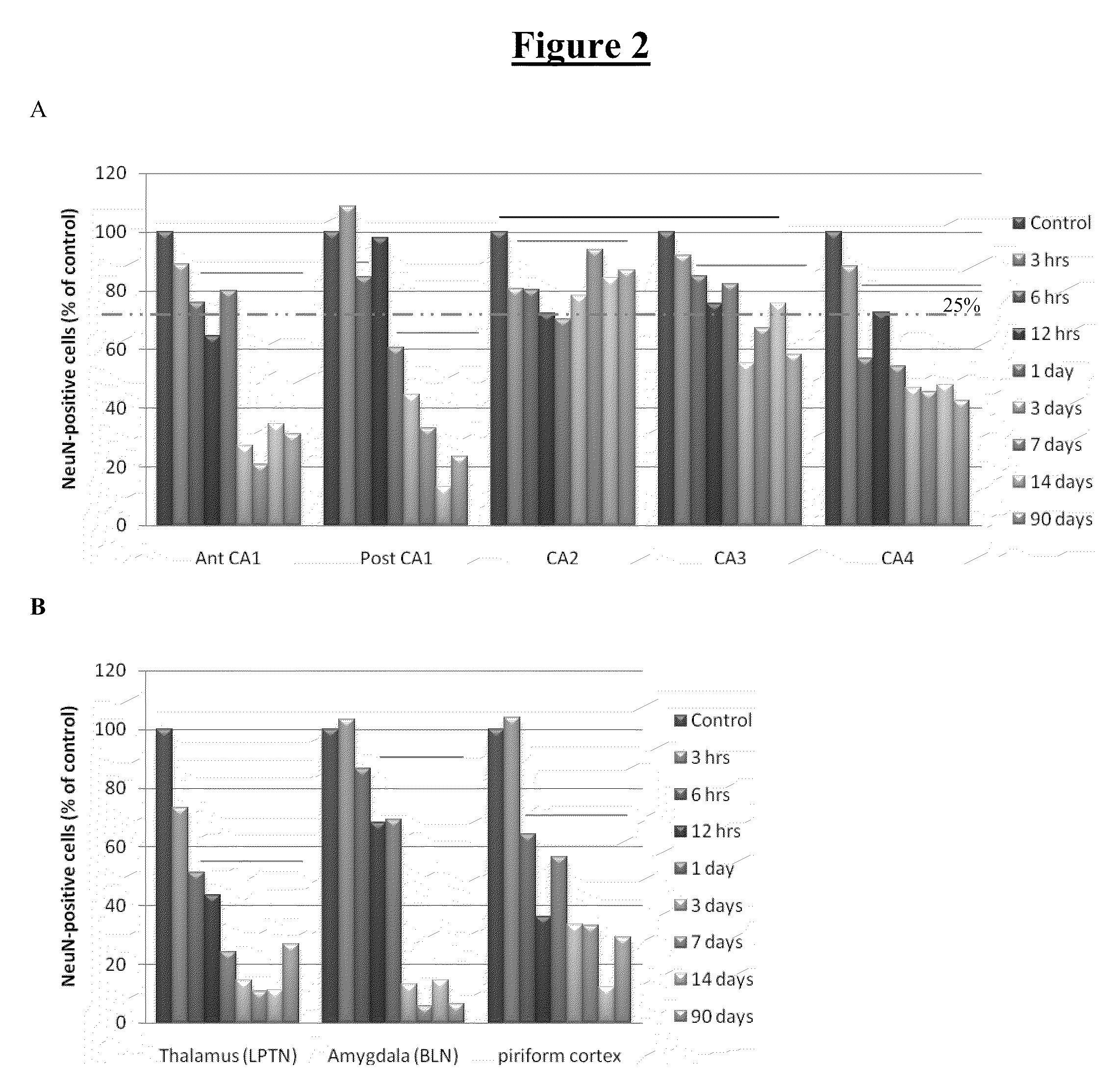Treatment for epilepsy
a technology for epilepsy and treatment, applied in the field of epilepsy treatment, can solve the problems of social stigma and discrimination, patients with uncontrolled seizures experience significant morbidity and mortality, and achieve the effect of relieving symptoms, arresting or inhibiting the development of symptom
- Summary
- Abstract
- Description
- Claims
- Application Information
AI Technical Summary
Benefits of technology
Problems solved by technology
Method used
Image
Examples
example 1
Pilocarpine Rat Model of Epilepsy
A. Cannulation of the Femoral Vein
[0166]Animals were anaesthetized for approximately 40 minutes under a continuous supply of 3% isoflorane and positioned in dorsal recumbence on a heating pad during surgery. The surgical sites were cleaned and shaved with Betadine soap. A 3 cm ventral skin incision was made from the lower right quadrant of the abdomen and along the right thigh, next to a discernible crease marking the position of the femoral vein, femoral artery, and sciatic nerve. Minimal dissection of the adductor muscles was performed to visualize the vascular bundle, and the femoral vein, femoral artery and sciatic nerve was carefully separated. A small nick was made in the femoral vein, and a P10 polyethylene cannula, prefilled with physiological saline containing heparin (1 mL heparin / 1 L PBS), was inserted 4 to 5 cm. Multiple 4.0 silk sutures were ligated around the femoral vein, femoral artery, sciatic nerve to secure the cannula. The animal ...
example 2
Effects of Epileptic Seizures on the Brain in a Rat Model
[0171]Status epilepticus was induced in male Wistar rats as described in Example 1. The effects of epileptic seizures on the brain of these rats were characterized as described below.
A. Characterization of SE-Induced Neuropathology
[0172]Neurodegeneration was assessed using stereological analysis with the optical dissector method and staining for NeuN to quantify neurons. Three coronal sections per animal were analyzed, and 60-100 neurons were counted per brain section in a naïve animal. Cell counts were performed at, 3 hrs, 6 hrs, 12 hrs, 24 hrs, 3 days, 7 days, 14 days, and 3 months following the termination of SE. All animals developed SRSs between 3 and 8 weeks. At least 4 animals were included in all groups. To date, the following brain regions have been analyzed: pyramidal layer of the hippocampal subfields anterior CA1, CA2, CA3, CA4, posterior dorsal CA1 and posterior ventral CA1 (D&V), basolateral amygdaloid nuclei (BL...
example 3
TAT-NR2B9C Rescues Neuron Loss in Dorsal CA1 Region Following Epileptic Seizures
[0175]Status epilepticus was induced in male Wistar rats as described in Example 1. Tat-NR2B9c (3 nmol / gm in physiological saline) was administered via the femoral vein 3 hours following termination of SE at a constant rate of 60 μm per minute. The rats were allowed to recover for 14 days after SE and then analyzed.
[0176]Neurodegeneration was assessed in terms of loss of NeuN-positive cells as described in Examples 1 and 2. The typical time course of neuronal cell loss after induction of epileptic seizures is shown in FIG. 6. Cell loss is maximal at about 7 days post-SE, a depletion that remains by day 14.
[0177]As shown in FIG. 8, Tat-NR2B9c rescued neuron loss in a dose-dependent manner when administered to rats at about 3 hours after induction of epileptic seizures. In contrast, a control peptide Tat-NR2BAA did not decrease neurodegeneration (FIG. 4A).
[0178]In surprising contrast, Tat-NR2B9c administer...
PUM
| Property | Measurement | Unit |
|---|---|---|
| Time | aaaaa | aaaaa |
| Time | aaaaa | aaaaa |
| Time | aaaaa | aaaaa |
Abstract
Description
Claims
Application Information
 Login to View More
Login to View More - R&D
- Intellectual Property
- Life Sciences
- Materials
- Tech Scout
- Unparalleled Data Quality
- Higher Quality Content
- 60% Fewer Hallucinations
Browse by: Latest US Patents, China's latest patents, Technical Efficacy Thesaurus, Application Domain, Technology Topic, Popular Technical Reports.
© 2025 PatSnap. All rights reserved.Legal|Privacy policy|Modern Slavery Act Transparency Statement|Sitemap|About US| Contact US: help@patsnap.com



